Buy or gift a stand-alone digital subscription and get unlimited access to dozens of back issues for just £18.99 / $18.99 a year.
Please register at www.exacteditions.com/digital/cornucopia with your subscriber account number or contact subscriptions@cornucopia.net
Buy a digital subscription Go to the Digital EditionThomas Whittemore, the American scholar and philanthropist, was instrumental in restoring the Byzantine treasures of Ayasofya. Robert S Nelson delves into his enigmatic life
On a summer night in June 1929, the 12th to be exact, the American Thomas Whittemore, English professor, Egyptian archaeologist, Russian relief worker and restorer of the mosque of Ayasofya, the former church of Haghia Sophia in Istanbul, dined with eight friends at the city’s finest hotel. This was the Hotel Tokatlian, located on the Grande Rue de Péra, now İstiklâl Caddesi, next to the Cité de Péra, today the Çiçek Pasajı.
A few years later, in 1933, Agatha Christie made the hotel better known internationally when she began her Murder on the Orient Express with a scene in the dining room of the Tokatlian. Dining were two Americans, one an elderly philanthropist, and witnessing the event was the novel’s detective hero, Hercule Poirot. After the dinner in 1929, no one was killed on a long train trip, but the meeting must have been important, because its participants signed the menu. Curiously anticipating Christie, all of the names that can be deciphered, other than Whittemore’s, were those of wealthy philanthropists. Why were these men at the Tokatlian, what was their association with Whittemore, and why did he keep that menu among his personal effects for the rest of his life?
Today mainly filled with tailor’s shops, the former hotel is badly in need of the gentrification that is sweeping across İstiklâl. Agatha Christie must have known the Tokatlian from her frequent trips to Iraq with her archaeologist husband. However, as Hercule Poirot would have quickly seen, the site of the dinner is one of those false clues that writers of mysteries, and even of magazine articles, add to divert their narratives, especially at the beginning. Poirot would be right in wanting to know more instead about Monsieur Whittemore.
Born in Cambridge, Massachusetts, in 1871, Whittemore graduated in 1894 from Tufts College, which had been founded by his grandfather. Shortly thereafter he was hired to teach English literature and soon added art history as well. Within a few years, he took up archaeology, joined the staff of the Egyptian Exploration Fund and from 1911 to 1915 excavated in Egypt. In 1908 he met Henri Matisse and began a long relationship with the artist that led to Matisse creating a spare, elegant portrait of Whittemore decades later.
During the First World War, excavations in Egypt ceased, and Whittemore again changed careers, engaging in relief work in Russia. In 1915 he made a long trip across the country and returned to the US to encourage a group of wealthy Protestant donors, mainly from New England, to form the American Committee of Relief of Russian Refugees.
After the war, the committee metamorphosed into the Committee for the Rescue and Education of Russian Children, with Thomas Whittemore as its leader. In that capacity, he travelled frequently to Russia via Istanbul and settled Russian children in Bulgaria, France and America. Ultimately, hundreds of Russian children were educated and assimilated into local cultures. For this work, the French government made Whittemore a Chevalier of the Légion d’Honneur in 1927.
During the 1920s, Whittemore also aided Russian monks on Mount Athos. After the Revolution, the once large and prosperous Russian monasteries had lost their financial support from their country, and by the early Twenties monks were starving. Working with American patrons, especially Charles R Crane, a generous supporter of the American College for Girls in Constantinople, Whittemore arranged provisions for the Russian monks. In 1923, for example, he and George Pratt, the son of one of the principals of the Standard Oil Company, delivered 40 tons of supplies to Athos. Whittemore became such an important person there that his portrait was placed among those of the abbots of the Panteleimon monastery on Athos, where Kurt Weitzmann, later a prominent professor of Byzantine art at Princeton University, saw it in the 1930s.
Whittemore turned back to Egyptian archaeology at the end of the 1920s and began to excavate at an important early Coptic monastery, but he continued to harbour other ambitions. The Byzantine church of Haghia Sophia had long been on his mind. On July 6, 1920 he wrote to his old friend Isabella Stewart Gardner, founder of the Boston museum that now bears her name, about Istanbul during Ramazan, paying particular attention to what was still the mosque of Ayasofya:
“On the twenty-seventh night of Ramazan, the night of power, thousands of Mohammedans as usual came to Sancta-Sophia… Gothic cathedrals are monuments. They have no functional unity. Here were ten thousand people all within sound of the Imam’s voice & within sight of the Member [minbar]… The Egyptian Temple was lighted by a shaft of light. Light stole into the Parthenon. The Pantheon is a spot of light. The lighting of a Gothic cathedral is a stencilled pattern. Sancta-Sophia is a sphere of light. It is the universe of buildings. Sancta-Sophia: Wisdom. It is what the world needs most and has lost.”
The letter must have made a strong impression on its recipient, because two years later, in December 1922, Mrs Gardner invited Whittemore to give an illustrated lecture at the Gardner Museum entitled “Sancta Sophia in Constantinople: Its Origins and Present Significances”.
That autumn the Republican army entered Istanbul and the city was never the same again. The Ottoman state was abolished on November 1, 1922. Whittemore followed events in Turkey from nearby Bulgaria, where he was engaged in archaeological work from 1922 to 1924. In 1928 he became an assistant professor at New York University, and it appeared he might settle down to a traditional academic career. Yet it is easy to imagine him becoming bored with the routine of university life – office hours, committee meetings and so on – after decades of world travel.
As soon as he started teaching, he must have looked elsewhere for another career. One place was surely Istanbul, although precise clues are scant. To suggest a context for that dinner at the Tokatlian in the summer after his first teaching year, it is best to jump forward, then backtrack to fill in the gaps in the historical record.
In June 1931, the Council of Ministers of the Turkish Republic issued a directive authorising the Byzantine Institute of America and its director, Whittemore, to uncover the mosaics of the mosque of Ayasofya. Unlike the government-funded German archaeological institutes, which had branches around the Mediterranean, including Istanbul, at first the Byzantine Institute of America was no more than Whittemore, his imagination and his all-important patrons.
What he accomplished in the late 1920s was no small feat. He persuaded his American donors to shift their philanthropy from Russian children to Byzantine archaeology and to underwrite the new institute. Some years later, Whittemore wrote that the institute began as a “voluntary association” in 1930 and was incorporated in 1934. Even a voluntary association would have needed a planning meeting, and what better occasion than a formal dinner at the best hotel in Istanbul to seal the deal?
But finances were only one part of the problem. Next, Whittemore had to secure the concession to restore the mosque, and there he had serious competition from the British, who had long had ambitions for the monument, and from the Germans, who had launched their own institute in the city and had a tradition of undertaking major archaeological projects with the Ottoman regime.
Among other items Whittemore saved was a letter of June 4, 1930 from the aforementioned George Pratt, who had accompanied him to Athos in 1923. Pratt wrote that he understood that “you have been negotiating in Constantinople with Halil Bey for a concession to clean the Mosaics in Sancta Sophia. I am very glad to know of the progress you have made, and think it would be a wonderful thing if we can secure this concession.”
The letter documents Whittemore’s backstage discussions with Halil Bey, the director of the Archaeological Museum and brother of Osman Hamdi Bey. When Pratt wrote that he hoped that “we” can succeed, he revealed that he was one of the financial backers of the Byzantine Institute of America. Whittemore had indeed made excellent progress in the year since the Tokatlian dinner.
In 1931 the mosque was closed and the work of restoration on Ayasofya began. Whittemore’s team first removed the paint and plaster covering the lunette over the principal door into the main hall of the mosque. There they uncovered the magnificent Byzantine mosaic of Christ enthroned with an emperor prostrate at his feet and flanked by medallion images of Mary and an angel. Its unveiling caused quite a stir not only among the international scholarly community, but also locally in Turkey.
On July 19, 1932, Whittemore wrote to the treasurer of the Byzantine Institute in Boston about a trip he took to Ankara as the guest of the government.
“The Ghazi sent his younger adopted daughter Zehra Kemal to meet me at the station… [We went to] his farm just outside Ankara. The Ghazi’s daughter took me about… and at about half past five the President of the Republic arrived and sent almost immediately for me. I was taken in by his daughter. She has just been graduated at Constantinople College for Women and the Ghazi was eager to hear her English which he does not know. So at the beginning she translated for me then we began to speak in French. We talked about his daughter, her English and what I thought of her continuing her education in America or in England for the English… [Later] the conversation turned to how far Turkish builders had carried architecture beyond the Byzantines. With so many about us it was not the time to look at the photographs I had brought to show him but he assured me that there would be a moment before I left the city…
“The next day… the Ghazi sent for me to come to his cabinet… We looked at the photographs of the mosaics. The Ghazi gave great attention to them studying the position of the figures in relation to one another and to the architecture of the mosque. He several times arranged the photographs himself in the right order and expressed profound interest and satisfaction in the work…”
In 1933, Whittemore’s team removed the plaster from the lunette in the southwest vestibule of the building to reveal another important Byzantine mosaic of the emperors Justinian and Constantine before Mary and the infant Jesus. The following year they unveiled in the south gallery the large mosaic of Deesis, Mary and John the Baptist on either side of Christ.
In March 1934, the mosque was secularised and turned into a museum, and in the following February Mustafa Kemal made an official visit. Work continued at the monument until 1940 and resumed during the Second World War, but for Whittemore, his greatest moment of personal triumph may have been that trip to Ankara in 1932 and Atatürk’s endorsement of his work at “Sancta Sophia”.
Thomas Whittemore is no biographer’s delight. His diaries do not survive, and he left no personal letters, save some from his youth. I have quoted from some of his more demonstrative letters, but there do survive evocations of him from his friends. Mildred Bliss, who with her husband founded the superb museum, garden and research institute of Dumbarton Oaks in Washington, described Whittemore as “shy, utterly kind, [with] a will of steel… [He] preferred frugality, and his modest lodgings in three or four countries were of a charmless simplicity”.
Others described his social gifts. “He was a brilliant talker – unexpected and fascinating with his expressive voice. There was an atmosphere of buoyancy about him, at times, almost of gaiety.”
Characterised as part poet and mystic, Whittemore was also a man of action who created the Byzantine Institute with a library in Paris, an office in Boston and fieldwork in Istanbul and elsewhere. He took no salary from the institute, never married, lived simply, and consequently after his death in 1950, he was impossible to replace as director. The institute’s patron network dwindled; its archaeological projects were absorbed by other institutions; and the Byzantine Institute of America, “entirely Whittemore’s conception” according to Mildred Bliss, soon faded away.
Robert S Nelson teaches art history at Yale University and is the author of ‘Hagia Sophia, 1850–1950: Holy Wisdom Modern Monument’ (University of Chicago Press)
ICFA (Image Collections and Fieldwork Archives) at Dumbarton Oaks houses one of the most important collections of Byzantine photographs and fieldwork papers in the world, plus the records of the Byzantine Institute and the papers of its founder, Thomas Whittemore.
See ICFA’s online exhibition – Before Byzantium: The Early Activities of Thomas Whittemore 1871–1931
Two ports – Sevastopol and Yevpatoria – rule Crimea’s flat west coast. One was built for war, the other for recreation. Both played a part in the Crimean War
Geonese merchants, a millionaire painter and a symbolist poet brought fortune and fame to the eastern stretches of Crimea’s south coast and its fertile hinterland
Balaklava, Sevastopol, Inkerman, the Valley of Death – in Britain, where the savage toll was so acutely felt, these names still have the power to arouse pride and fury. Algernon Percy travelled to Crimea to visit the evocative battlefields
From the Danube to the Caucasus, conflict raged. The Ottomans were fighting for their territories and their lives, but the full story of their courage is only now being told, says the military historian Mesut Uyar
The war of 1853–56 was a calamitous clash of imperial ambitions. Turkey sustained heavy losses, but without them she might have ceased to exist. David Barchard puts the conflict in context
With its healing brine baths and golden beaches, its wealth and variety of architecture, and its layers-deep history, this resort offers something for everyone – from hedonist to hypochondriac
Yevpatoria in Crimea was the home the young Anna Akhmatova, an icon of Russian literature, who fell foul of Stalin
Like many writers, Chekhov made his way to Crimea to nurse his TB in a milder climate. His two houses, now museums, became magnets for artists. One he left to his sister, the other to his wife.
Philip Mansel on the future Edward VII’s Ottoman expedition
By any standard, Hüsamettin Koçan’s mountain-top Baksı Museum, in the northeastern Anatolian village where he was born, deserves a place among the world’s top ten remote museums.
This silver goblet was one of more than 600 medieval treasures from Central Asia crowding Bonhams’ elegant rooms in Edinburgh for six days in January.
Mulberries come in an array of hues: black, white, pink, purple; some enticingly sweet, others astringent and healing. As Berrin Torolsan can testify, having grown up with them in her Istanbul garden, all are adored – by man, mallard and pine marten alike. Here she traces the history of this lucious fruit
From the towers of Tatary to the tombs of Scythian kings, from clifftop citadels to an underground castle, from Balaklava to the beaches of the Tsarist Riviera, Crimea is a land to fall in love with, waiting to be enjoyed, not destroyed
The V&A’s Tim Stanley eyes up the Louvre’s astonishing new Islamic offering
Aard Streefland tells the story of the Dutch orientalist Marius Bauer (1867–1932)
As the Sadberk Hanım Museum celebrates the art of embroidery, Min Hogg marvels at the motifs of palaces, fruit and flowers, sea and cityscape, wrought stitch by stitch, to adorn every Ottoman home
The Crimean khans founded their capital in the fertile foothills of the Crimean Mountains in the 15th century. This was the nucleaus of the land known as Cim Tartary. The garden palace of Bahçesaray is a glorious reminder of the khans’ 350-year reign
Dramatic and picturesque, Crimea’s southern coast became a resort for doomed royalty and a refuge for ailing literati
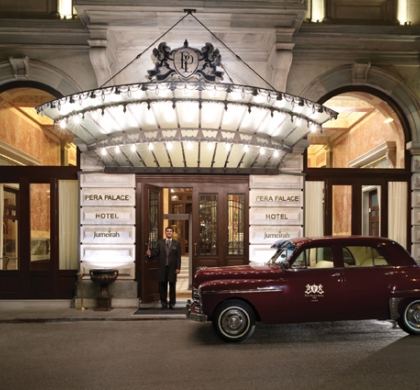
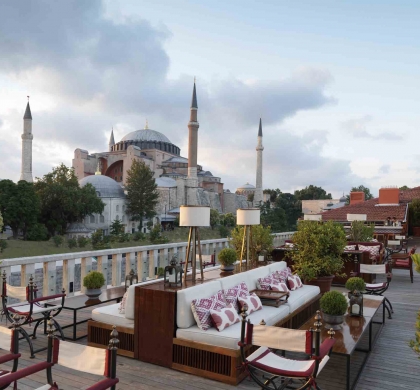
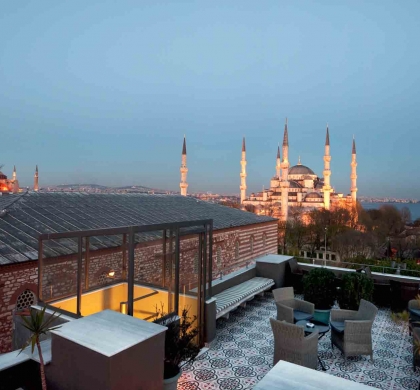
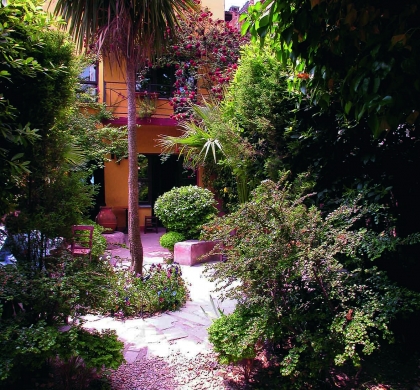
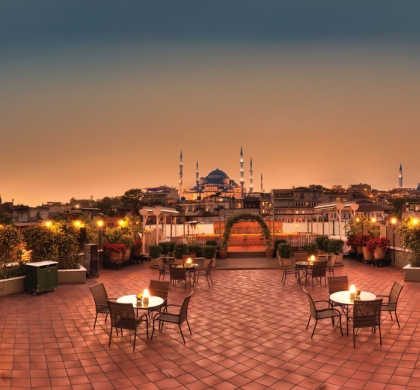
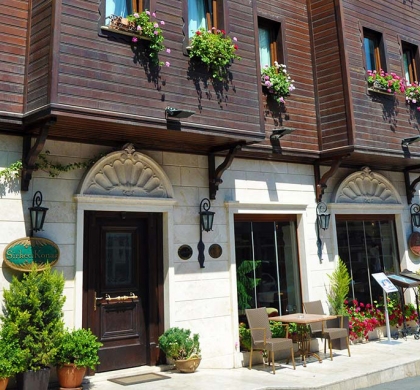
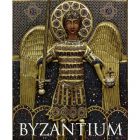
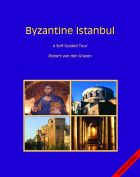
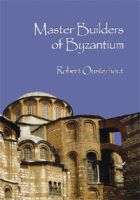
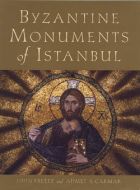


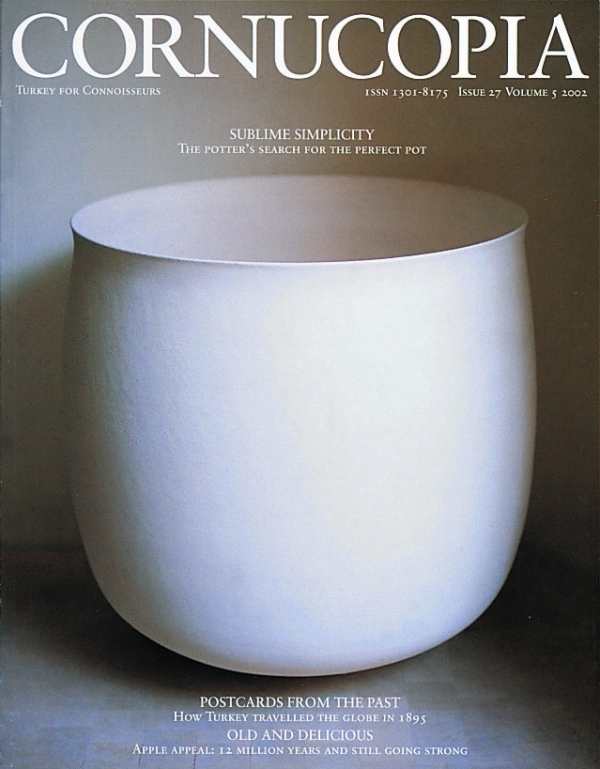
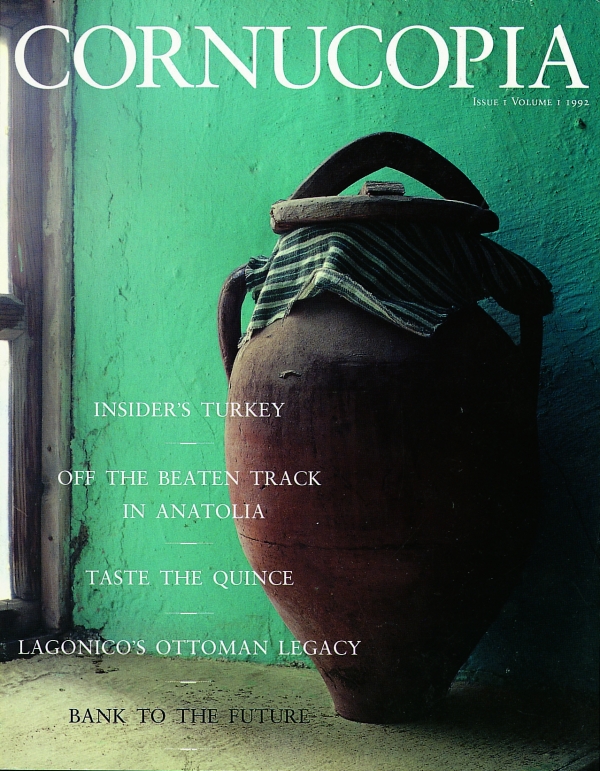

Cornucopia works in partnership with the digital publishing platform Exact Editions to offer individual and institutional subscribers unlimited access to a searchable archive of fascinating back issues and every newly published issue. The digital edition of Cornucopia is available cross-platform on web, iOS and Android and offers a comprehensive search function, allowing the title’s cultural content to be delved into at the touch of a button.
Digital Subscription: £18.99 / $18.99 (1 year)
Subscribe now